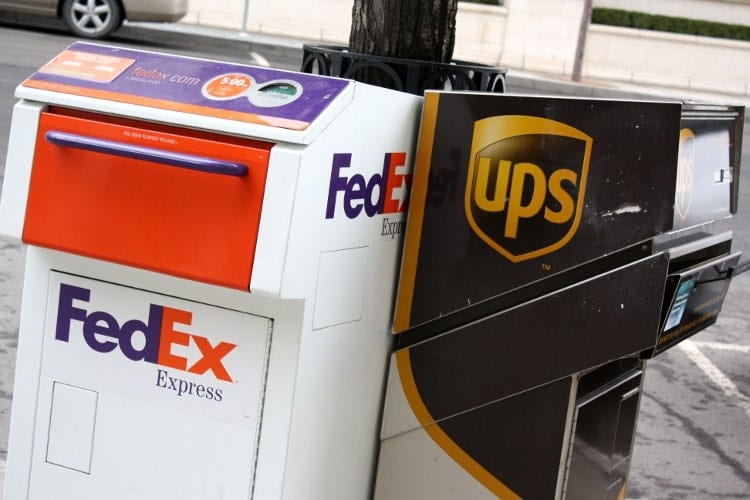Switch or Stay Put? Assessing Peak Season Deliveries with UPS and FedEx
Earlier this month, FedEx set up an intriguing scenario for the 2017 holiday season. Rather than follow the lead of its main rival UPS by adding a peak season surcharge to some post-Thanksgiving deliveries, FedEx opted to keep things simple.
Beyond the expected additions for oversized packages and other shipments that require special handling, the company will not add any new charges. Cue a lot of industry chatter and UPS clients reaching for the calculators.

A New Pricing Factor for Peak Season Deliveries
When we covered the introduction of the UPS New Peak Charge back in June, we noted that the response from FedEx would be a critical factor for brands deciding how to handle this year's holiday shipments.
For more than a decade the two main U.S. carriers have mirrored each other in terms of shipping costs and charges. As recently as the adoption of dimensional weight pricing, the pair have been in virtual lockstep when major changes affect the industry.
These seemingly opposing stances on pricing peak season deliveries at a premium rate could see all of that end.
FedEx has given retailers a clear reason to use their services for at least six weeks as the year comes to a close. The distinction will be especially important for companies who do most of their business online. Without the ability to offer in-store pickup or in-house delivery services, it falls to a choice between FedEx or UPS. The United States Postal Service provides an inexpensive alternative but the limited tracking and potential for customer service issues make this a non-starter for some brands.
There are also certain caveats to the adjusted pricing, such as the $3 addition to oversized packages shipped through FedEx and the 12-day exclusion period during which UPS will not apply its new peak charge.
For many, the decision on how to handle peak season surcharge will come down to what you sell and when you sell it.

What Are the Pros and Cons of Switching to FedEx?
On the surface, the decision to use FedEx for holiday deliveries might seem like a simple one. No peak surcharge makes things much easier to calculate for most retailers. However, there are some important exceptions, as well as some broader concerns to take into consideration.
Specific scenarios in which you might not want to switch from UPS include:
- If your business ships mostly oversized items, which will still incur additional charges under FedEx. As always, shipping calculators are recommended to compare likely costs: UPS | FedEx | USPS
- If the bulk of your holiday business can be shifted to the start of December. Deliveries made by UPS between 12/3/17 to 12/16/17 will not incur the new peak charge.
- If the administrative burden of switching to another parcel carrier will outweigh the extra 27 cents per delivery that UPS will charge on ground shipments, which make up the majority of holiday deliveries.
While oversized shipments might sound like a limited category, FedEx estimates that these packages account for approximately 10% of its ground-shipping volume during the holiday rush. For brands who ship large items - or those with a wide range of product categories - this represents an important consideration for holiday shipping.
In broader terms, we have to remember that FedEx has experienced its own operational problems over successive holiday periods. The impact of even more volume flowing its way this year could see peak season deliveries pushed over the edge.

For all of the company's talk of committing to the "millions of loyal small business customers and consumers shipping holiday gifts," there is no guarantee FedEx won’t experience significant issues as more deliveries are pushed through a system that is already overburdened. We've seen the challenges of managing surge warehousing in the past and, in many cases, it hasn't been a pretty sight.
The ramifications for customer complaints and damaged brand reputation are a real cost if this comes to pass. The long-term losses would quickly overtake any money saved on the peak season surcharge. By contrast, reduced volumes and increased revenue on peak season deliveries could, in theory, propel UPS to its most efficient holiday period to date.
A decision that seems straightforward at first glance actually has several angles to consider before taking the plunge. Given the importance of coming through for customers at this critical time of year, retailers must crunch the numbers and decide what's best for the brand.